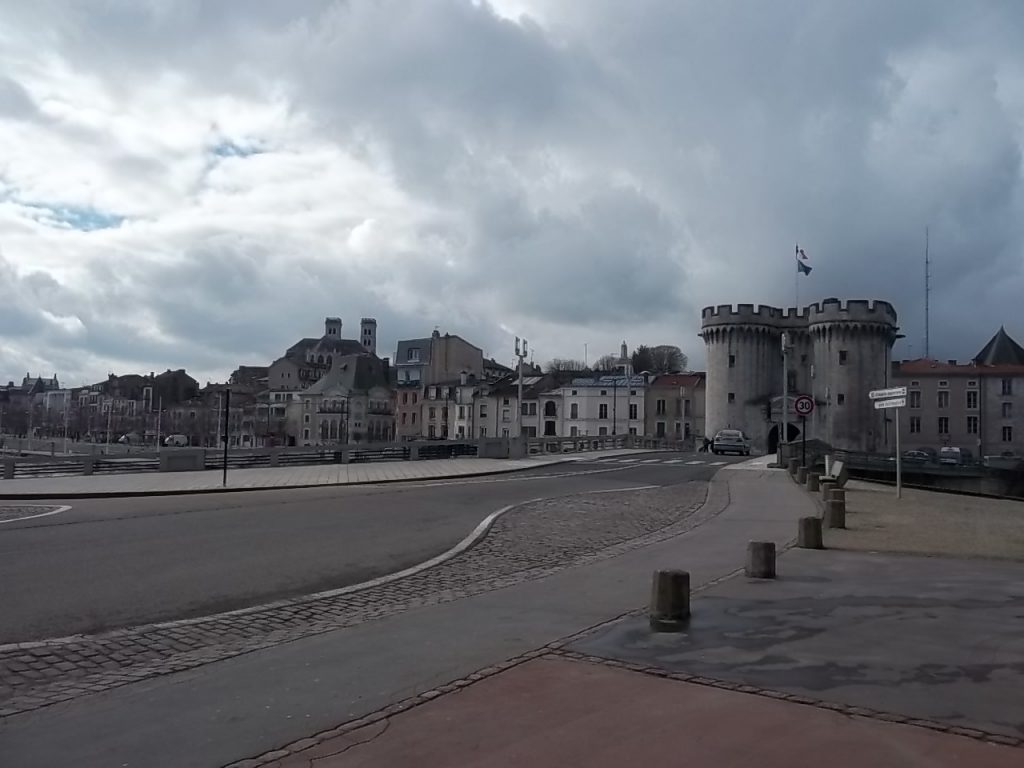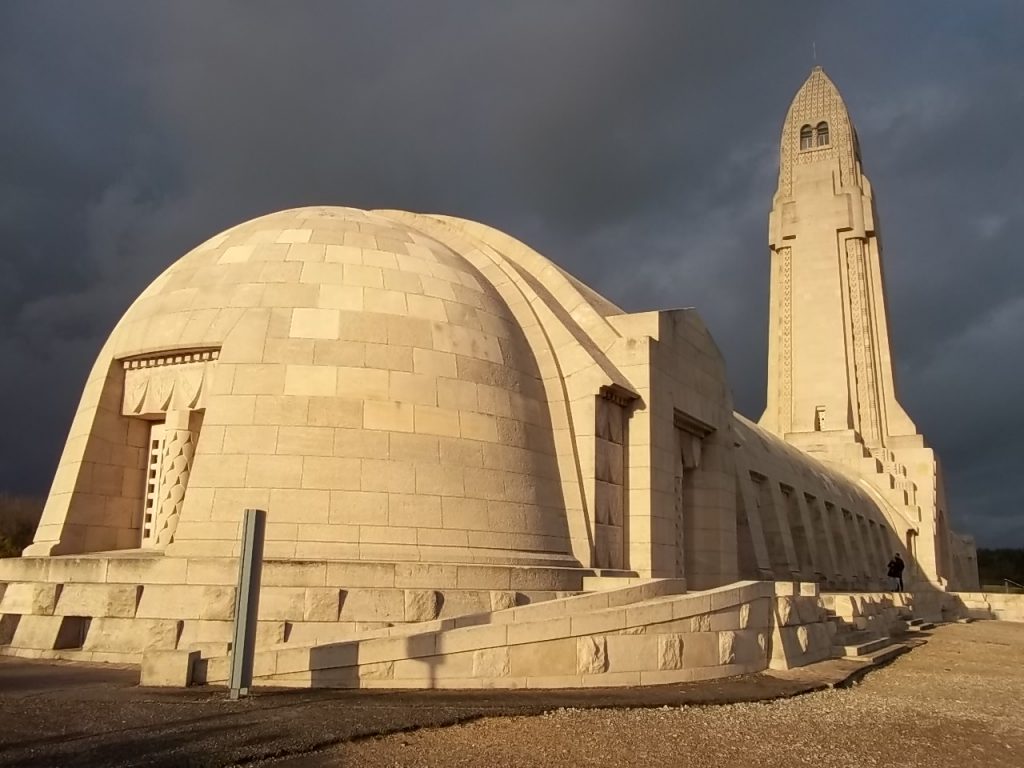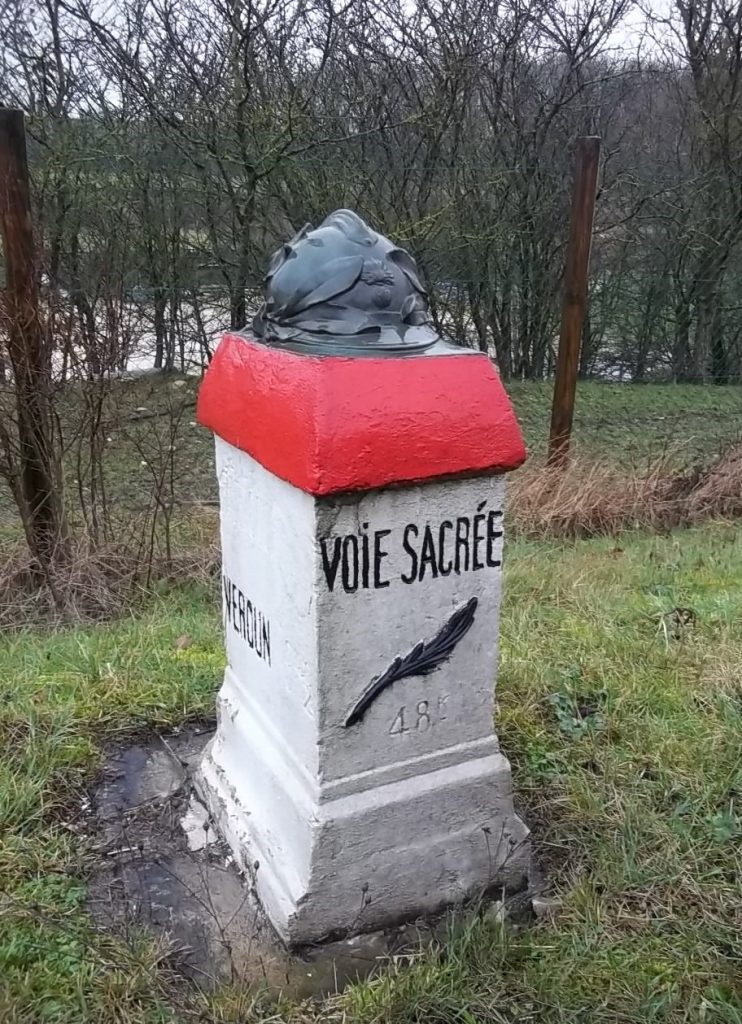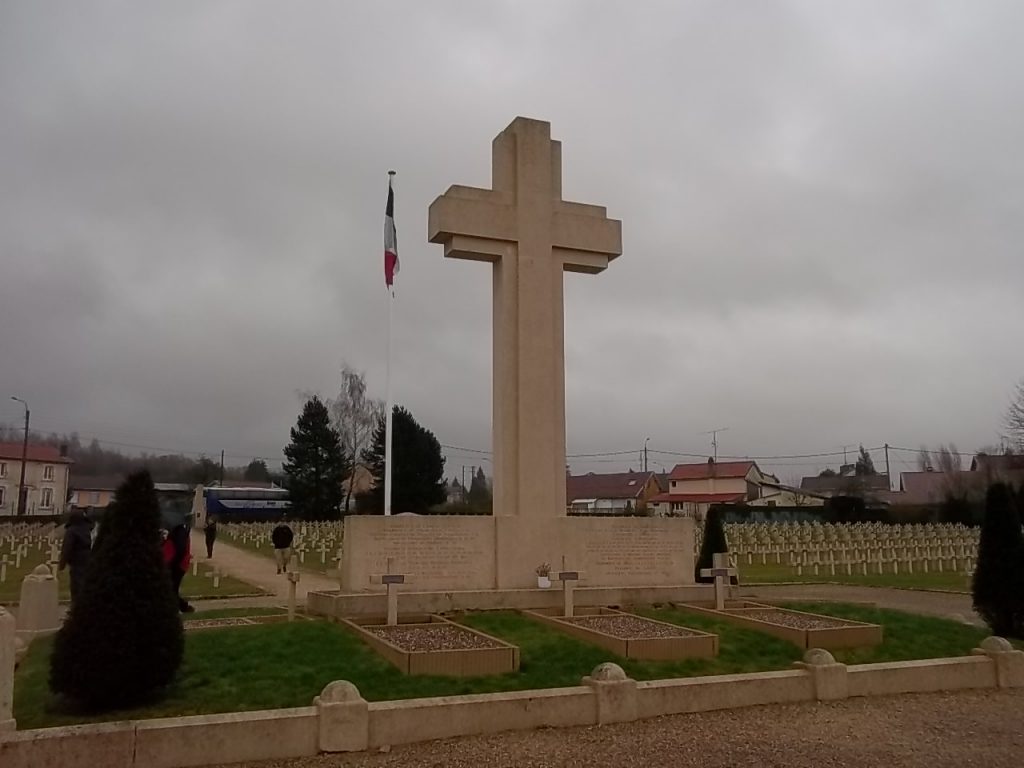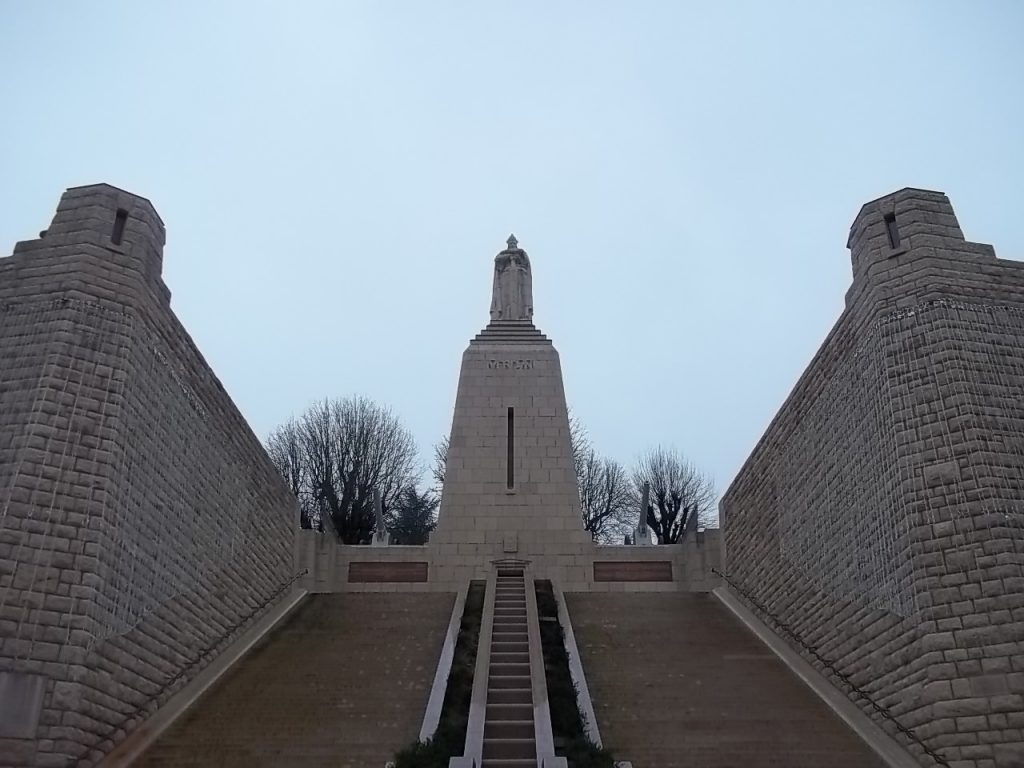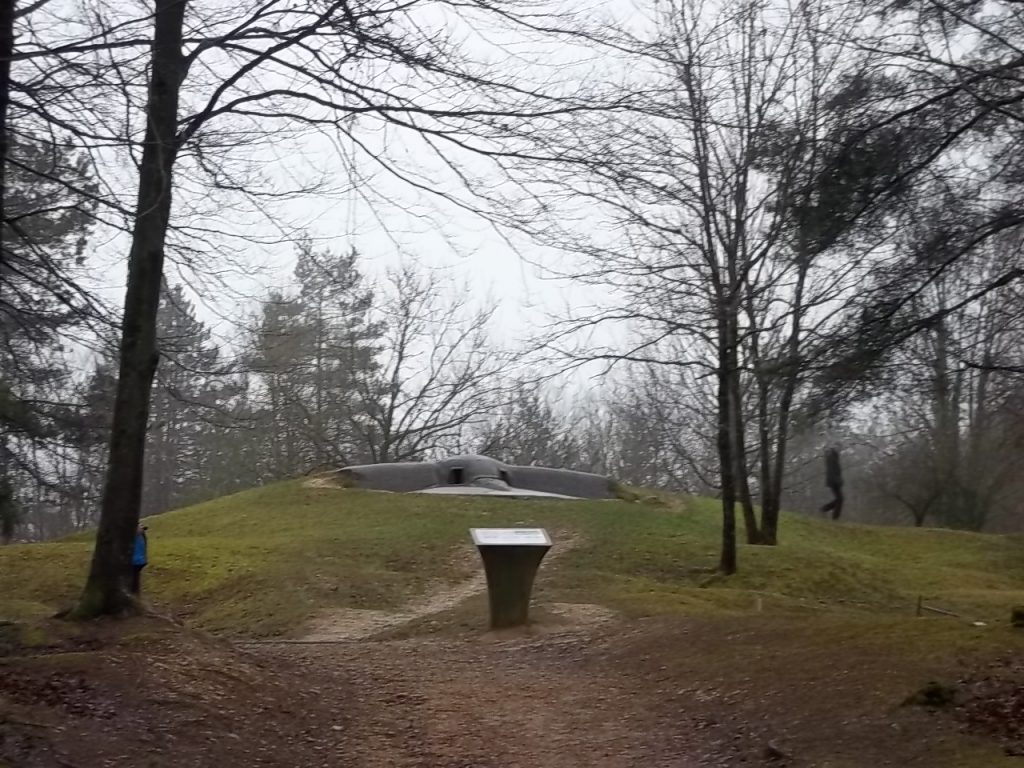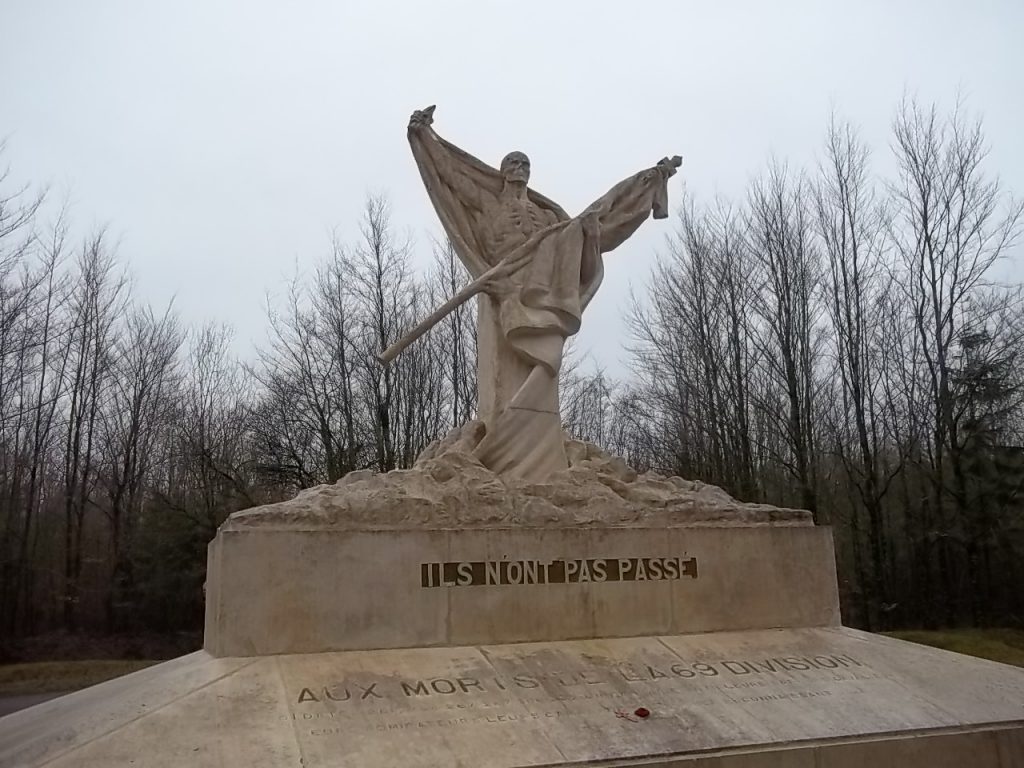Tour 10 – Two-day tour of the Battle of Verdun 1916
Itinerary Day One
- Bois des Caures
On the battle’s opening day on the 21st February 1916 at the Bois des Caures, a stand was made by a Colonel Emile Driant and his men against overwhelming odds set the tone for the defiant French defence throughout the Battle of Verdun. Emile Driant was killed in action and only two officers and 56 men survived from a total of 1,200 men.
Today the Bois des Caures is on the northern edge of the national battlefield park at Verdun with woods and open areas heavily pitted with shell craters.
- Colonel Emile Driant’s memorials, the original burial site and his command post
The German’s initially buried Colonel Driant in Bois de Caures and his personal effects were returned to his widow but later his body was reinterred at the place where he fell.
The Chasseurs’ Memorial was raised to the Colonel and his two battalions which is located close by.
We will discover the original bunker which was Colonel Driant’s command post.
- The Verdun Memorial and museum, Fleury
In the very heart of the battlefield, the Verdun Memorial offers an exceptional museum experience. The visit covers three floors with over 2,000 WW1 artefacts, an extensive photograph collection, soldier testimonies and audiovisual exhibits.
- The Trench of Bayonets
The 137th Regiment of the French infantry was devastated almost to the last man. This haunting place was discovered by some French teams exploring the battlefield years after the war. One of the trenches was discovered completely filled in, with only a neat line of bayonets protruding out of the ground. The bayonets were still attached to their rifles.
- Fort Douaumont
This fort is the mightiest of the forts surrounding Verdun and it was captured in a surprise attack in just four days after the start of the Battle of Verdun. It was occupied by the German army for eight months.
An exhibition reveals the eye witness accounts, photographs and archival documents into the history of this major battlefield site.
- Fort Vaux
Fort Vaux was a polygonal fort forming part of the ring of 19 large defensive works intended to protect the city of Verdun. It housed a garrison of 150 men and was the second fort to fall during the Battle of Verdun.
The defence of Fort Vaux was marked by heroism and endurance of the garrison.
- Fort de Souville
Fort de Souville was the last fort standing between the German advance and Verdun. This fort played an important role and saw heavy fighting. The fort was armed on it’s ramparts with 9 cannons, 5 mortars and 8 pieces of artillery.
Itinerary Day Two
- The Mort Homme Memorial or Dead Man’s Hill
The famous Mort Homme ‘Skeletal Memorial’ commemorates those of the French 69th Division, who bore the brunt of much of the fighting during the Battle of Verdun. There is also a memorial to the men of the French 40th Division close by.
It bears the famous words ‘Ils n’ont pas passe’ (‘they did not pass’) in response to the rallying cry ‘Ils ne passeront pas’ (‘They shall not pass’) of General Robert Nivelle.
- Cote (hill) 304 Memorial
This memorial commemorates the 10,000 French soldiers who fell on this ridge.
The hills were hit with so many artillery shells that Hill 104 was reduced to just 300 metres in height.
- The Monument to Victory and the soldiers of Verdun
This tour explores the centre of Verdun and the various memorials relating to the Battle of Verdun.
The Monument contains 73 steps leading to a crypt sheltering registers bearing the names of those soldiers who were awarded the Verdun Medal. It gives a splendid view over the town. On the 1st November each year, the Eternal Flame is brought here from the Arc de Triomphe in Paris.
- Pave de Faubourg cemetery and the Unknown Warrier
This cemetery contains both WW1 and WW2 war graves with just under 5,000 burials from WW1.
The story of the Unknown Warrier will be discovered here.
- The Andre Maginot Memorial
This memorial is in memory of Andre Maginot, the pre-war under-minister of war, who joined the army in 1914. During the war, he was wounded but despite his injuries, he remained with his unit until the evening when eventually he allowed himself to be assisted to the aid post.
Hailed as a war hero and a recipient of the Medaille Militaire, Maginot returned to politics following his injury.
- The Ossuary at Douaumont
The Ossuary contains the remains of over 130,000 unknown soldiers with a vast national French cemetery containing over 16,000 soldiers.
From the Tower there is a panoramic view of the entire battlefield.
Further information
- Our tours are purely personal with the same family or group with no other people joining the tour which is in line with the Covid-19 regulations.
- With the itinerary listed we offer complete flexibility so if you wish to amend the itinerary for example to visit an ancestor’s grave or a particular memorial or to an area you would like to be included we can check on the feasibility of this.

